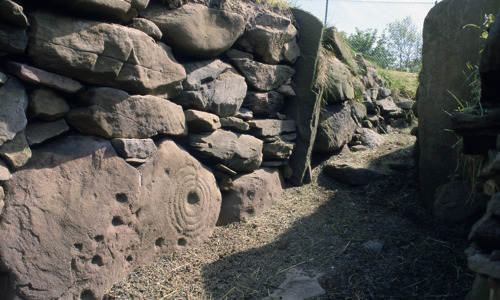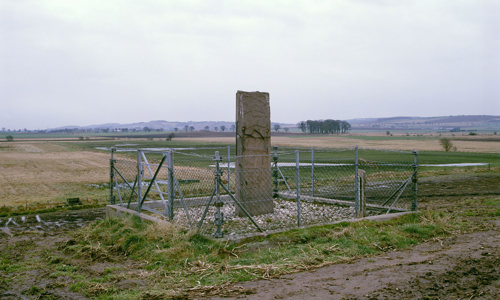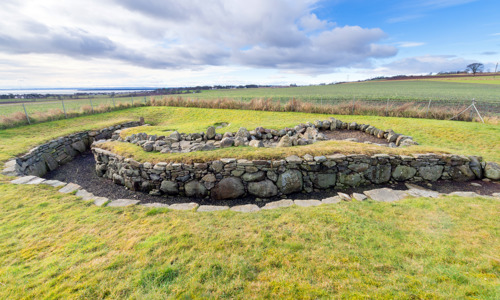History
Tealing Dovecot was built by Sir David Maxwell of Tealing and his wife Helen in 1595. This is confirmed by an inscription on the south-east skewput – an embellishment at the base of the roofline on the gable.
A dovecot is a pigeon house. Dovecots were built at many high-status residences, and contained between 500 and 2,000 nesting boxes. They supplied owners with an important source of food, especially over the winter months.
Outside, a projecting stone ledge encircles the building. This was to deter predators, such as rats or martens, from climbing up to get to the pigeons. It also provided perching space for the birds to preen their feathers and sun themselves.
Before the 1700s, most dovecots were free-standing structures. The earliest examples generally took one of two forms:
- circular-plan dovecots, often called ‘beehive’ dovecots, which generally date from the 1500s
- rectangular-plan dovecots with mono-pitch roofs called ‘lectern’ dovecots, which came later
Tealing Dovecot is unusual. Although it has a rectangular plan, it has a conventional pitched roof, so isn’t a true lectern-type. This could be because it was among the first of the new-style rectangular dovecots.
Valuable asset
Dovecots and their contents were protected by law. In 1567 shooting pigeons illegally incurred a heavy fine. ‘Vagabonds’ – those who could not pay the fine – faced 40 days in prison. A second offence could mean the loss of the culprit’s right hand.
There was also a popular belief that if a dovecot was demolished, the laird’s wife would be dead within the year. This may explain why so many dovecots survive.














